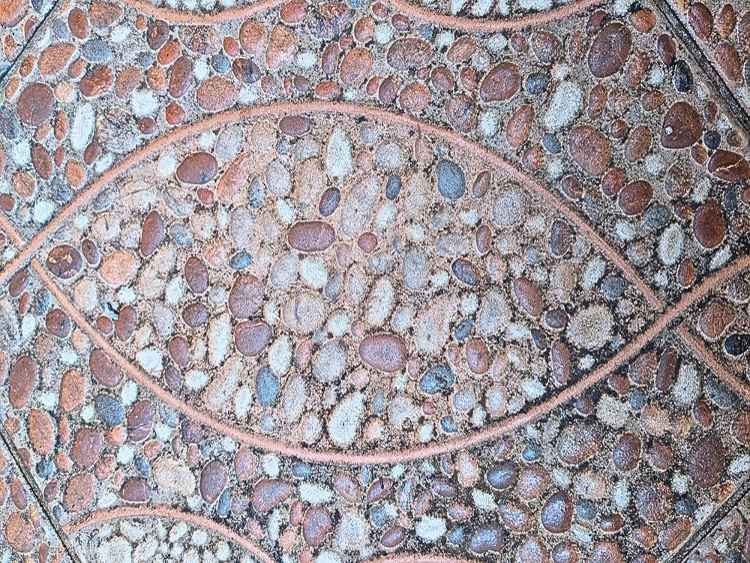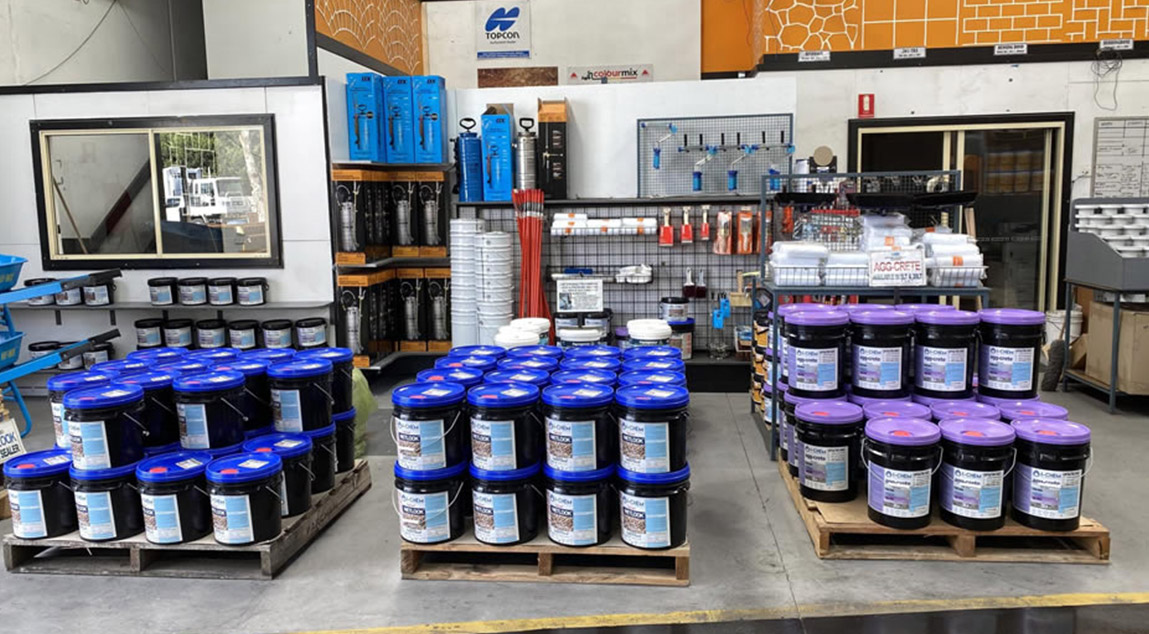Common Mistakes to Avoid When Using Exposed Aggregate Retarder

Using a quality concrete retarder is the best way to ensure your aggregate surface turns out as beautiful as possible. Concrete retarders slow the rate at which the top level of a fresh layer of concrete dries, allowing the aggregate materials to be easily exposed using a hose or broom.
Applying aggregate retarder the right way isn’t complicated, but doing it wrong can really affect your end result and turn what could be a stunning aggregate driveway, garden path, or pool surround into a lumpy, hole-filled nightmare.
Read on to find our seven mistakes to avoid when using exposed aggregate retarders!
1. Not Covering The Aggregate Properly
Your freshly laid aggregate concrete needs an even application of surface retarder for a professional-looking finish. If you add too much or too little retarder to your aggregate concrete, you may find it cures at different rates across the surface, leading to an uneven finish.
Unless you want a patchy, bumpy aggregate surface, you’ll need to lay down a nice, even layer of retarder. This is easily done with a retarder with a bright and opaque colourant. Many retarders come in bright blue, purple and green colours that will stand out as you use them. This makes it easy to see if any stones are still exposed, and you can also see the thicknesses of your layers easily.
These retarders will also change colour as they cure which makes it easy to see when it is finished drying. You can quickly see if your retarder is even because, if you have one patch drying at a different time to the rest of it, you’ll notice it has a different hue to the rest of the concrete slab.
2. Washing The Retarder Off Too Soon
Don’t be impatient while you wait for your retarder to cure! It’s important to let your retarder set for the recommended time, as if you try to wash it off too soon you’re going to be in trouble.
If your retarder hasn’t been cured for long enough, when you try to wash it off, you’ll find that most of your aggregate finish comes off along with it. This is because it hasn’t had time to set properly, and rather than slow the setting of the concrete around your aggregate, it just comes off with it upon the first hosing-down. You’ll then need to restart the aggregate retarding process, adding time to a project that will already be taking up much of your day!
3. Leaving The Retarder On For Too Long
On the other hand, leaving the retarder on for too long can lead to problems of the opposite kind. If it sets for too long, you may find it very hard to wash off with a traditional high-pressure washer or hose. This means you won’t be able to expose the aggregate materials inside your concrete.
If this has happened, you can try rougher methods of exposure such as acid etching or, in extreme cases, sandblasting. These rigorous methods can end up damaging your concrete if you’re not careful, as well as cracking or fully removing your aggregate materials from their settings.
4. Too Much Power When Washing Off Retarder
Have you applied your exposed aggregate retarder evenly and allowed it to cure for the perfect amount of time? Then it’s time to wash it off! You won’t need to use a high-pressure washer at first–instead, use a high-pressure attachment for a regular hose that has been set to a low pressure, or even a regular hose and a brush to remove the retarder.
Make sure not to have the nozzle too close to the concrete itself, as you may leave lines and marks on your concrete’s fresh surface. This can also happen if you try to remove the retarder too early or use machinery that is overly powerful. Using low-power tools will help your fresh concrete come out in one smooth piece, so always try them first before moving to more powerful methods!

5. Not Checking The Weather Before Applying
The good thing about most aggregate concrete retarders is that they are water-based, meaning they’re safe to wash off into your garden or drains without causing damage to your local environment. The bad thing is that this also makes it susceptible to thinning and running if it rains while your concrete is curing. Make sure to plan your concreting in advance so you’re not pouring and waiting during rainy weather!
Overly cool days mean you can leave your retarder on for longer before it cures. You could even leave it a full day and still be able to remove it! On the other hand, concrete cures faster on hot days. It will definitely need to be removed on the same day, as leaving it too long will make it very hard to remove the retarder with a hose.
6. Seeding Or Mixing–Choose The Right Method!
Depending on how you want your aggregates to look in the finished product, you’ll need to decide whether you seed your aggregates or mix them. Choosing the wrong kind may result in a look you’re not happy with!
- Seeding: This involves adding the decorative aggregate to the surface of the concrete after it has been poured. This will result in stones that protrude significantly from the surface after the retarder has been washed away, and it is great for decorative surfaces.
Seeding is used for surfaces like decorative garden pathways and walkways featuring stepping stones or embellishments on other plain surfaces.
- Mixing: This involves mixing the aggregate into the concrete before it is poured so it is more heavily embedded in the top surface. This will result in a more subtle but beautiful finish when the retarder is removed and is useful for concrete surfaces that will experience high foot or vehicle traffic.
Mixing is used for pool surrounds, driveways and patios.
Mixed aggregate concrete can also be sanded flat and polished to create a glossy floor ideal for commercial shops and businesses.
When adding aggregate, take care not to add too much to your concrete. While you may love the look, densely-packed aggregate is more likely to lift and chip over time without having enough concrete between them to hold the pieces in place.
7. Using The Wrong Tools
When the time comes to remove your aggregate concrete retarder, it’s important to use your tools in the right order to prevent moving too much and leaving permanent marks in your cured concrete.
Starting with a pressure washer isn’t always the best option, as it can damage your aggregates and remove too much concrete. Instead, start with a soft-bristled broom and push as much retarder and concrete off as you can. Switch to a stiffer broom if the concrete is a little harder, then a pressure washer only if you need quite a bit of power to remove the surface retarder.
Starting with the softest option will prevent you from accidentally damaging your concrete or removing too much, as adding concrete back if you take too much is no easy task.
Trust Aus Slate-Crete For Exposed Aggregate Supplies In Melbourne

Do you need exposed aggregate supplies in Melbourne? Visit Australian Slate-Crete Supplies online or at our store in Epping to find everything you need in one place. Our experts are on hand to assist you with any questions you may have about creating an aggregate surface and can point you towards everything you need.
We stock a range of quality concreting sealers, tools and pressure-washing accessories, and are happy to assist you in finding the concreting supplies that are right for your project. Call us on 03 9408 7722 or leave us an online message, and one of our team will gladly advise you!
-
 February 4, 2022Sandstone Concrete Stencil
February 4, 2022Sandstone Concrete StencilDo you want to add a touch of luxury and elegance to your concrete projects? If so, then consider using sandstone concrete stencils!
Read More -
 February 4, 2022Gloss Brick Sealer
February 4, 2022Gloss Brick SealerGloss brick sealer is a wonderful material for adding a brilliant shine to your brick slip wall feature.
Read More -
 February 4, 2022Bluestone Concrete Sealer
February 4, 2022Bluestone Concrete SealerIn a broad sense, the term “bluestone” is sometimes used to refer to a variety of stones. It’s a marketing term rather than a geological one.
Read More
